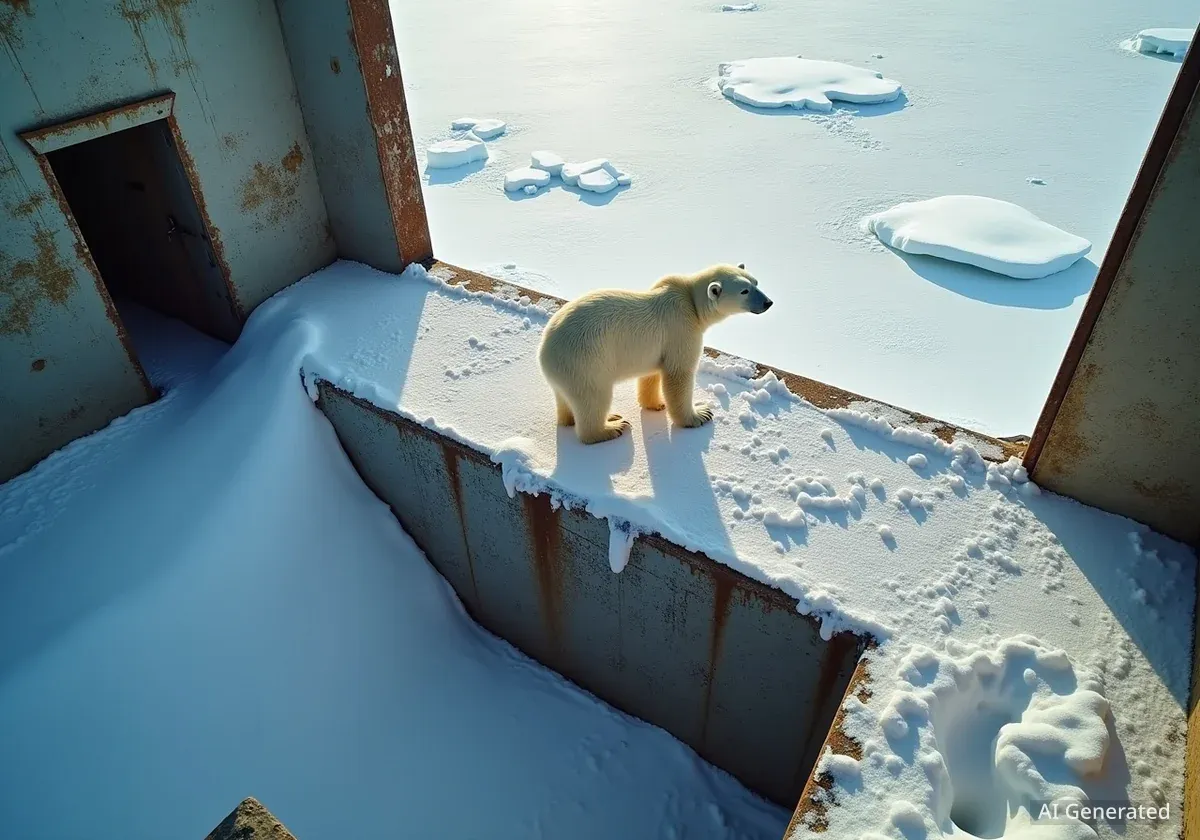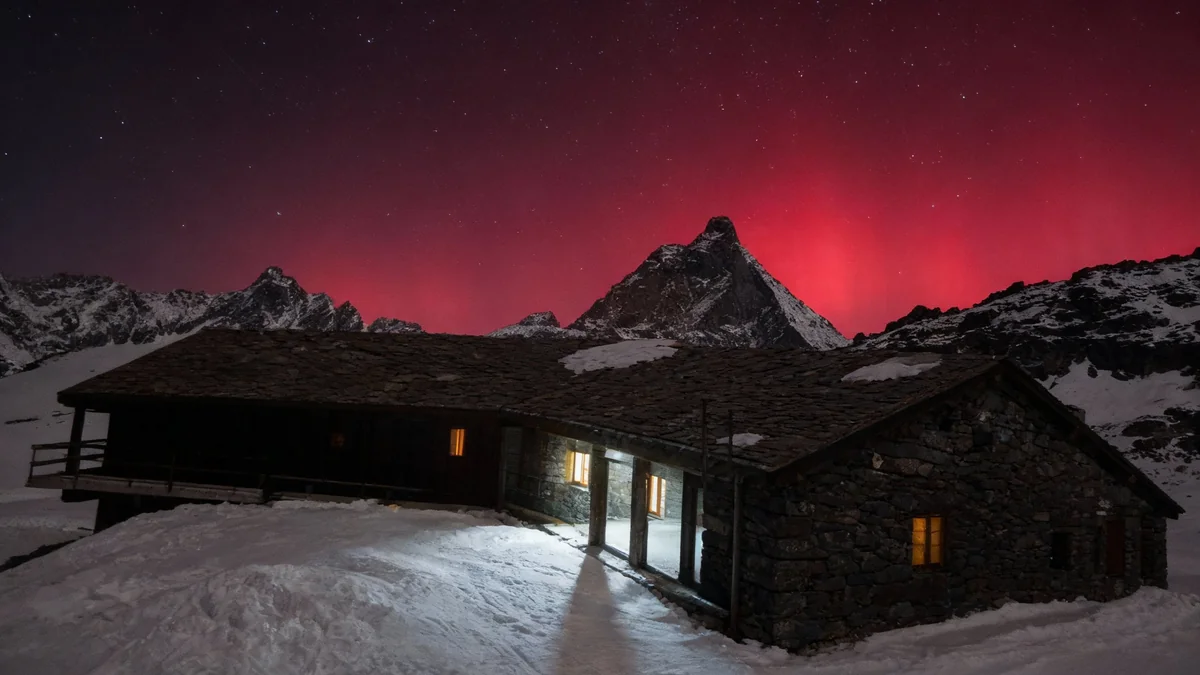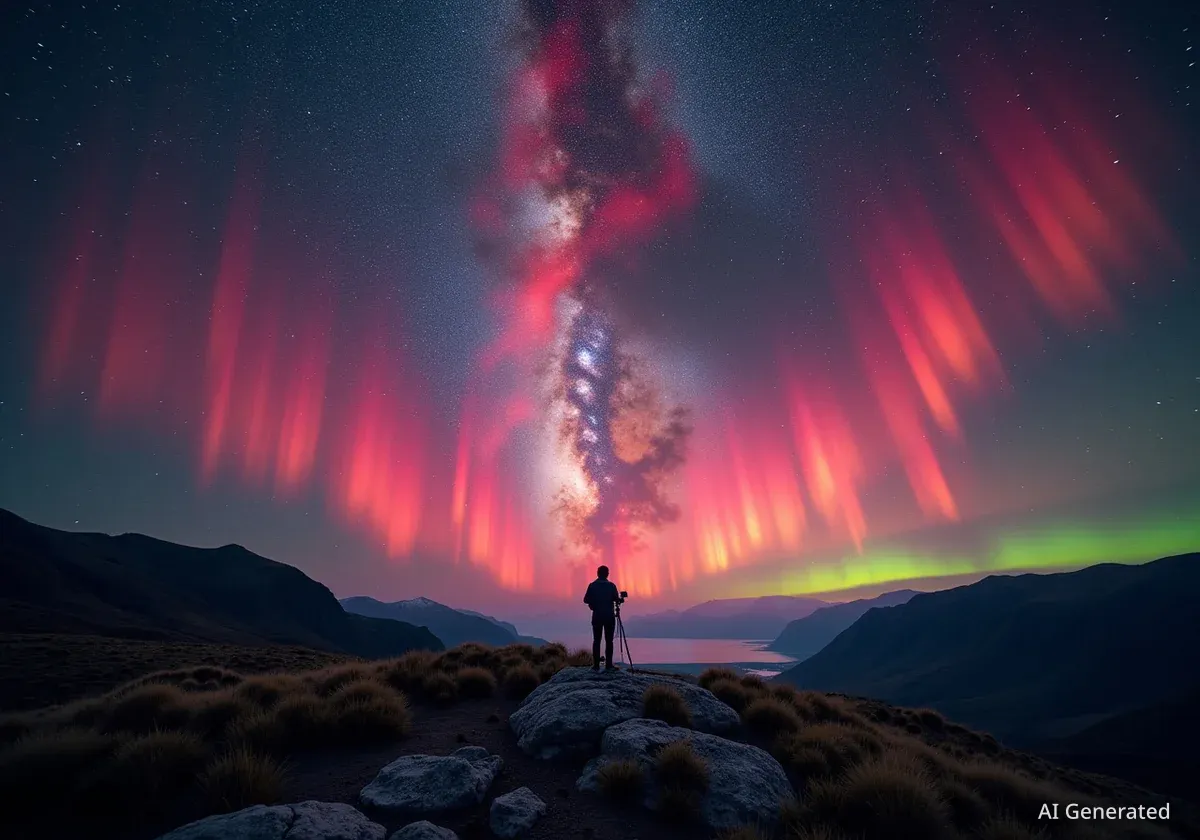A recent Arctic expedition has revealed a unique polar bear habitat on Kolyuchin Island. Photographer Vadim Makhorov used a drone during a cruise trip to document a group of polar bears living in an abandoned Soviet-era research station. This discovery offers new insights into how these apex predators adapt to changing environments and utilize human structures for shelter.
Key Takeaways
- Photographer Vadim Makhorov used a drone to find polar bears on Kolyuchin Island.
- The bears are living in an abandoned Soviet polar research station.
- They use the buildings for shelter from harsh Arctic weather.
- Makhorov notes the bears show little fear of drones but are wary of human activity.
- This area is also home to walruses and whales, creating a diverse ecosystem.
Drone Reveals Unexpected Polar Bear Residence
Vadim Makhorov, a photographer known for his North Pole expeditions, recently embarked on another journey to the Arctic. While on the Spirit of Enderby (Professor Khromov) ship, he deployed his drone over Kolyuchin Island in the Chukchi Sea. The drone footage captured an unusual sight: a group of polar bears occupying the derelict buildings of an old Soviet polar research station.
The drone approached the bears slowly. Some displayed curiosity towards the flying camera, with one bear even attempting to snap at it. However, most of the animals appeared largely indifferent to its presence. Makhorov ensures his drone flights do not disturb the wildlife, taking the drone away if an animal shows signs of fear.
Interesting Fact
Polar bears are the largest land predators on Earth. Adult males can weigh over 600 kg (1,300 lbs) and stand up to 3 meters (10 feet) tall when on their hind legs.
An "Interesting Neighborhood" in the Chukchi Sea
Kolyuchin Island, where this discovery was made, is located in the Chukchi Sea. Makhorov described the area as an "interesting neighborhood." He observed not only the polar bears but also a nearby huddle of walruses and whales swimming in the surrounding waters. This concentration of marine life suggests a rich food source for the polar bears.
The abandoned weather station provides the bears with a unique form of shelter. Makhorov noted their use of the buildings for protection. "Polar bears live here on an abandoned weather station," Makhorov shared on Instagram. "Nearby is a nest of walruses and also whales swimming. Bears enjoy comfort and coziness; they treat the buildings as shelter, safe from wind and rain. And in sunny weather, you can lie on your belly in the yard."
Background on Kolyuchin Island
Kolyuchin Island is a small island in the Chukchi Sea, off the coast of Siberia. It is known for its harsh Arctic climate and remote location. The abandoned research station dates back to the Soviet era, a relic of past scientific endeavors in the region.
Bear Behavior and Drone Interactions
According to Makhorov, the polar bears on Kolyuchin Island are not particularly afraid of the drone itself. He suggests they are more sensitive to other human disturbances. These include the noise and smell of boats, as well as human voices. He emphasizes his careful approach to drone photography, ensuring minimal impact on the animals.
"I try hard not to annoy animals. If I see that a bear is afraid of a drone, I don’t chase it, I take the drone away," Makhorov stated on Instagram. "But this rarely happens, because I fly to the animals very slowly, allowing them to get used to an unusual guest."
This careful method allows him to capture unique images without causing undue stress to the wildlife. His images provide a rare glimpse into the daily lives of these remote polar bears.
The Importance of Ethical Wildlife Photography
Makhorov's work highlights the importance of ethical practices in wildlife photography, especially in sensitive environments like the Arctic. His commitment to not disturbing the animals ensures their well-being. This approach helps to gather valuable data and images without negatively affecting the ecosystem.
The photographer also addressed public comments regarding his images. He expressed frustration over false claims that his photographs were generated by artificial intelligence. "It hurts me deep down," Makhorov said, calling the allegations a "devaluation" of his years of work. He noted the significant effort and risk involved in traveling to the Arctic to capture these authentic shots.
Polar Bear Diet
Polar bears primarily eat seals. They hunt by waiting for seals to surface at breathing holes in the ice or by stalking them on the ice. Their diet is rich in fat, which is essential for survival in the extreme cold.
Understanding Polar Bear Dangers
Despite their seemingly comfortable existence in the abandoned station, Makhorov issued a strong warning. He stressed that polar bears, while appearing "cute and friendly," are "extremely dangerous predators." This reminder is crucial for anyone interacting with these animals, even from a distance.
Polar bears are known for their strength and predatory instincts. They have been observed attempting to break into human-occupied polar bases. Researchers often install bars and spikes on windows and doors to prevent intrusions. This behavior underscores the need for caution and respect when in their territory.
Previous Discoveries and Recognition
This is not the first time polar bears have been documented using the abandoned structures on Kolyuchin Island. In 2022, photographer Dmitry Kokh also captured images of these bears. Kokh's photographs gained international recognition, winning the prestigious Nature Photographer of the Year award in 2022. This previous documentation confirms the long-term presence of bears in this unique habitat.
The continued observation of polar bears in this specific location provides valuable information. It helps researchers understand how these animals adapt to human-made structures. It also shows their resilience in a rapidly changing Arctic landscape. The abandoned station serves as a tangible example of human impact on remote environments, now repurposed by wildlife.
Climate Change Impact
The Arctic is experiencing significant warming, leading to a reduction in sea ice. This affects polar bears' ability to hunt seals, their primary food source. Adaptations like using abandoned buildings may become more common as their traditional habitats change.
Future Implications for Wildlife Conservation
The discovery on Kolyuchin Island offers a compelling case study for wildlife conservation. It demonstrates the adaptability of polar bears, but also highlights the need for continued monitoring. As sea ice diminishes, understanding how polar bears find alternative shelters and food sources becomes critical.
Conservation efforts must consider both the natural habitats and unexpected adaptations of these animals. Protecting remote areas like Kolyuchin Island, even those with abandoned human structures, could play a role in the survival of polar bear populations. The work of photographers like Makhorov is vital in raising awareness and providing visual evidence for scientific study.




